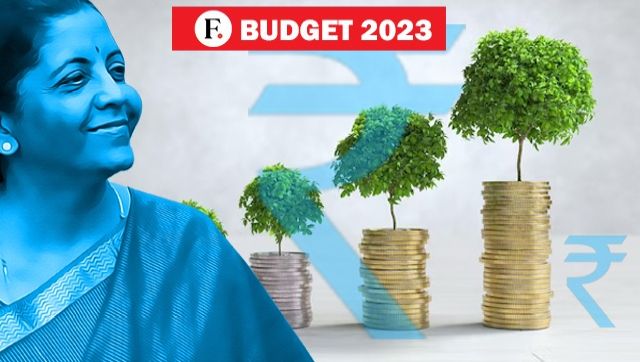Finance Minister Nirmala Sitharaman delivered her fifth and perhaps, most appreciated Budget on Wednesday. In her more than 80-minute speech, she stated that “green growth” will be one of the seven priority sectors (“
Saptarishi ”) of the Union Budget 2023. “These green growth efforts will help in reducing carbon intensity of the economy and provides for large scale green job opportunities,” she said. Catch all the LIVE updates from Budget 2023 HERE She explained that the “green growth” priority sector will include multiple programmes on green fuel, green energy, green farming, green mobility, green buildings and green equipment. This will also include policies for efficient use of energy across various sectors. But, what exactly does this ‘green growth’ mean? Here’s what we know about it. Green growth explained The term green growth means fostering economic growth and development while ensuring that natural assets continue to provide the resources and environmental services on which our well-being relies. It aims to respect biodiversity, natural resources and working conditions. According to the OECD, implementing a green growth strategy allows for the continuation of our society’s economic model of capitalism and sustainable growth, taking into account a rational use of resources.
**Also read: What are the new income tax slabs and how much tax will you pay?** India’s green growth push India is the fifth largest economy in the world. However, India is drastically depleting its resources like minerals, water, and fossil fuels to meet its growth demands. This continuous depletion of natural resources can have a significant negative impact on the nation’s economy as well as the environment. Hence, environmental sustainability is the need of the hour. Keeping this in mind, Finance Minister Nirmala Sitharaman in her Budget outlined various initiatives in line with this priority. [caption id=“attachment_12085182” align=“alignnone” width=“640”] Finance Minister Nirmala Sitharaman leaves her office for President’s house before presenting the Budget. In her speech, she said that green growth was one of the Centre’s priorities. AP[/caption] Green Hydrogen Mission: With an outlay of Rs 19,700 crores, this recently-luanched mission will facilitate the transition to low carbon intensity and reduce dependence on fossil fuel imports. She said that the country’s target was to reach an annual production of five MMT by 2030. Energy Transition: Nirmala Sitharaman has allocated Rs 35,000 crore for priority capital investments towards energy transition and net zero objectives and energy security. Energy Storage Projects: To steer the economy on the sustainable development path, Battery Energy Storage Systems with capacity of 4,000 MWH will be supported with Viability Gap Funding. A detailed framework for Pumped Storage Projects will also be formulated. Renewable Energy Evacuation: The inter-state transmission system for evacuation and grid integration of 13 GW renewable energy from Ladakh will be constructed with investment of Rs 20,700 crore including central support of Rs 8,300 crore. Green Credit Programme: To encourage behavioural change, a Green Credit Programme will be initiated under the Environment (Protection) Act. This will incentivise environmentally sustainable and responsive actions by companies, individuals and local bodies, and help mobilise additional resources for such activities. PM-Pranam: ‘The PM-Programme for Restoration, Awareness, Nourishment and Amelioration of Mother Earth’ will be launched to incentivise states and Union territories to promote alternative fertilisers and balanced use of chemical fertilisers. GOBARdhan scheme: A total of 500 new ‘waste to wealth’ plants under the under GOBARdhan (Galvanizing Organic Bio-Agro Resources Dhan) scheme will be established for promoting circular economy. These will include 200 compressed biogas (CBG) plants, including 75 plants in urban areas, and 300 community or cluster-based plants at total investment of Rs 10,000 crore. Bhartiya Prakritik Kheti Bio-Input Resource Centres: The finance minister has proposed to facilitate over the next three years 1 crore farmers to adopt natural farming. For this, 10,000 Bio-Input Resource Centres will be set-up, creating a national-level distributed micro-fertiliser and pesticide manufacturing network. MISHTI: Building on India’s success in afforestation, ‘Mangrove Initiative for Shoreline Habitats & Tangible Incomes’, MISHTI, will be taken up for mangrove plantation along the coastline and on salt pan lands, wherever feasible, through convergence between MGNREGS, CAMPA Fund and other sources. Amrit Dharohar: Wetlands are vital ecosystems which sustain biological diversity, Nirmala Sitharaman said. The government will promote their unique conservation values through Amrit Dharohar, a scheme that will be implemented over the next three years to encourage optimal use of wetlands, and enhance bio-diversity, carbon stock, eco-tourism opportunities and income generation for local communities. Coastal Shipping: Coastal shipping will be promoted as an energy efficient and lower cost mode of transport, both for passengers and freight, through public-private partnr mode with viability gap funding. Vehicle Replacement: Replacing old polluting vehicles is an important part of greening our economy. In furtherance of the vehicle scrapping policy mentioned in Budget 2021-22, the government has allocated adequate funds to scrap old vehicles of the central government. States will also be supported in replacing old vehicles and ambulances.
With inputs from agencies Read all the Latest News , Trending News , Cricket News , Bollywood News , India News and Entertainment News here. Follow us on Facebook, Twitter and Instagram.


)

)
)
)
)
)
)
)
)



